Torque Control and Retraction of Maxillary Incisors: what is the problem? Part 2
INTRODUCTION: Aligners have been used for varioustreatments, including the more complex types.OBJECTIVE: The aim of the present article is to providea simplified explanation of what is necessary fororthodontists to control the torque of maxillary incisorswhile performing retraction with the use of aligners. Therelationship between the retraction force applied and thebinaries for controlling the effect of lingualization willbe discussed and illustrated. CONCLUSION: Apparentlythe tools existent today do not allow adequate control oftorque on incisors during retraction.
Autores: Renato Parsekian Martins,

INTRODUÇÃO: Os alinhadores têm sido utilizados para vários tipos de tratamento, inclusive para os mais complexos. OBJETIVO: O presente artigo visa explicar, de maneira simplificada, o que é necessário para que o ortodontista controle o torque dos incisivos superiores durante uma retração com alinhadores. A relação entre a força de retração aplicada e os binários para controlar o efeito de lingualização será discutida e ilustrada. CONCLUSÃO: Parece que as ferramentas hoje...
Leia mais
INTRODUÇÃO: A mesialização de molares inferiores de corpo é muito frequente na clínica ortodôntica, devido às agenesias e às perdas precoces de molares ou pré-molares. No entanto, esse movimento ortodôntico é difícil de ser efetuado, devido à necessidade de se controlar a rotação, a angulação e o torque desses dentes durante a sua translação. Essa dificuldade decorre, também, do tipo de osso encontrado na mandíbula, que apresenta uma cortical com alta densidade e, muitas...
Leia mais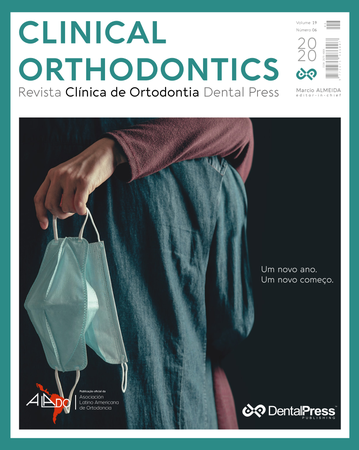
OBJETIVO: O objetivo do presente estudo é apresentar o caso de uma paciente adulta com atresia maxilar severa tratada com expansão maxilar assistida por mini-implantes. RELATO DE CASO: Paciente do sexo feminino, 26 anos de idade, apresentou-se para tratamento com atresia maxilar severa e mordida cruzada posterior. A paciente estava em um estágio avançado de maturação da sutura palatina mediana. Foi indicada a realização da expansão rápida da maxila assistida por mini-implantes...
Leia mais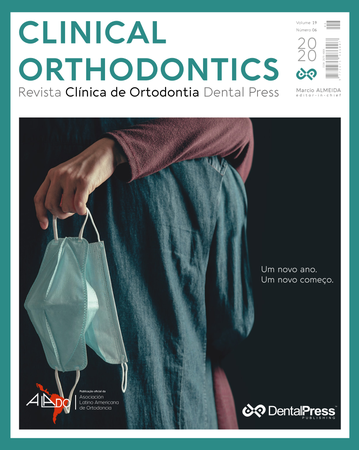
INTRODUÇÃO: A deficiência mandibular está presente em mais de 70% dos casos de má oclusão de Classe II e, em muitos casos, é acompanhada de atresia maxilar, necessitando tanto de aparelhos de avanço mandibular quanto para a expansão da maxila. DESCRIÇÃO: O presente relato clínico descreve o tratamento de um paciente do sexo masculino, de 11 anos e 7 meses de idade, com as características descritas e pós-pico de crescimento, o qual foi tratado com um aparelho híbrido composto por...
Leia mais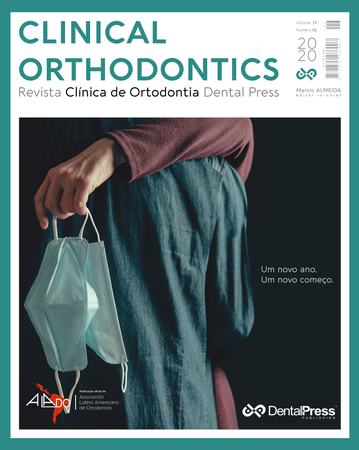
INTRODUÇÃO: O aumento do número de pacientes adultos trouxe para o ortodontista alguns desafios importantes: alterações periodontais e dentárias como unidades ausentes, perdas ósseas e de papilas, desarmonias no contorno gengival e desgastes incisais são muito frequentes. Esses últimos podem trazer significativas consequências estéticas e funcionais, requerendo um diagnóstico cuidadoso e, na imensa maioria dos casos, abordagens transdisciplinares. OBJETIVOS: Analisar os tipos e...
Leia mais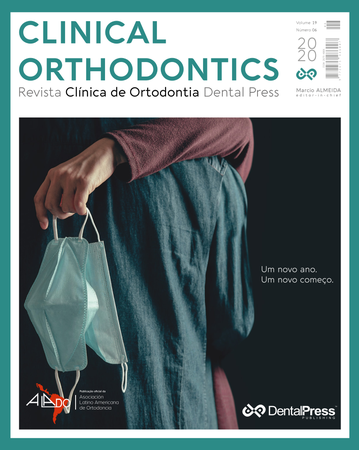
INTRODUÇÃO: A associação de recursos auxiliares, como os mini-implantes, aos alinhadores permite amplificar o leque de opções terapêuticas, principalmente para casos complexos, nos quais a ancoragem é o ponto crítico. Além disso, tratar uma Classe II associando-se mini-implantes extra-alveolares aos alinhadores pode favorecer a obtenção de resultados mais precisos, mais previsíveis e mais rápidos, que dificilmente seriam alcançados com o uso isolado dos alinhadores. OBJETIVOS: o...
Leia mais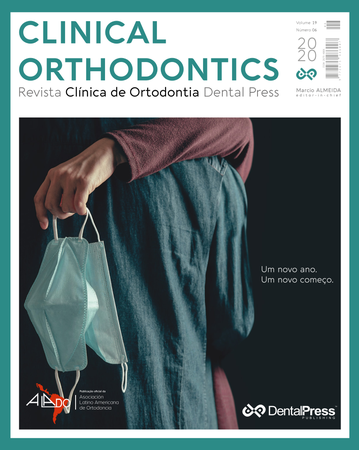
INTRODUÇÃO: Os alinhadores têm sido utilizados para vários tipos de tratamento, inclusive para os mais complexos. OBJETIVO: O presente artigo visa explicar, de maneira simplificada, o que é necessário para que o ortodontista controle o torque dos incisivos superiores durante uma retração com alinhadores. A relação entre a força de retração aplicada e os binários para controlar o efeito de lingualização será discutida e ilustrada. CONCLUSÃO: Parece que as ferramentas hoje...
Leia mais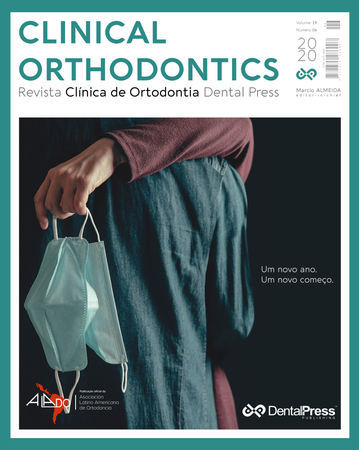
INTRODUÇÃO: A mesialização de molares inferiores de corpo é muito frequente na clínica ortodôntica, devido às agenesias e às perdas precoces de molares ou pré-molares. No entanto, esse movimento ortodôntico é difícil de ser efetuado, devido à necessidade de se controlar a rotação, a angulação e o torque desses dentes durante a sua translação. Essa dificuldade decorre, também, do tipo de osso encontrado na mandíbula, que apresenta uma cortical com alta densidade e, muitas...
Leia mais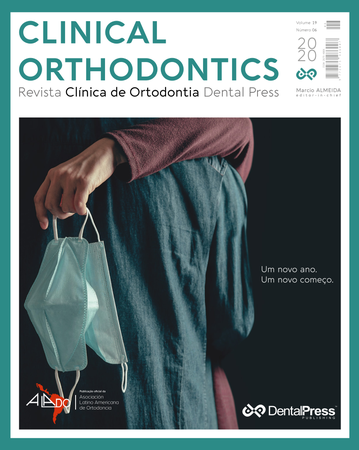
O objetivo do presente artigo é demonstrar a confecção de um dispositivo para remoção de alinhadores ortodônticos. A confecção do dispositivo mostra-se simples e de baixo custo, facilitando a remoção dos alinhadores sem causar danos às unhas ou ao esmalte das pacientes.
Leia mais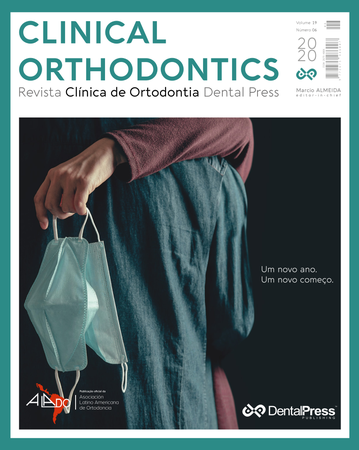
INTRODUÇÃO: A Síndrome da Apneia Obstrutiva do Sono (SAOS) é definida por episódios recorrentes de uma obstrução do ar nas vias aéreas durante o sono. Sua etiologia é multifatorial, podendo estar associada a fatores exógenos, patológicos ou anatômicos das vias aéreas superiores. A história clínica, além de exames complementares, como tomografia computadorizada e polissonografia (PSG), são determinantes para realização do diagnóstico definitivo. MÉTODOS: A terapêutica foi...
Leia mais
INTRODUÇÃO: A reabsorção por substituição é mais lenta e tardia quando envolve o esmalte. OBJETIVO: O objetivo desse trabalho é ressaltar que o esmalte pode ser envolvido e fazer parte da anquilose alveolodentária e da reabsorção dentária por substituição, embora isso seja incomum no dia a dia clínico. Com base nos princípios da biopatologia óssea, não há necessidade biológica de se remover o dente envolvido, já que ele pode ser considerado uma estrutura óssea normal,...
Leia mais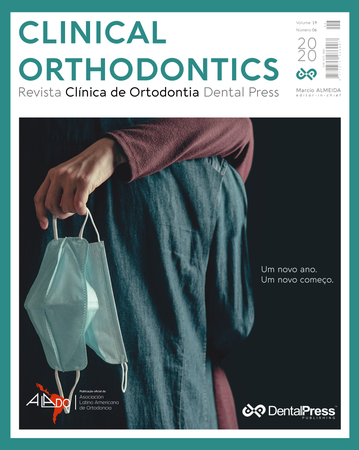
I once received a Class II, division 1 patientfor an orthodontic consultation that mademe rethink what we will be facing in thevery near future - or rather, what we arealready facing. During the first talk, thisclient self-diagnosed himself with a ClassII problem and mandibular deficiency, sincehis previous research on the Internet hadindicated this deformity, even though he hadnever had any records or seen an orthodontistfor diagnosis. The talk then, after the client’sprevious diagnosis,...
Leia mais
Ricardo Tesch graduated from the Federal University of Rio deJaneiro (UFRJ) in 1992. He obtained a degree as a Specialist inOrthodontics from the Campinas Association of Dental Surgeons,in 1999. After that, he followed an academic life and obtained aMaster’s in Medicine - Head and Neck Surgery from HigienópolisHospital, in São Paulo, and a PhD in General Medicine – Neurologyfrom UFRJ. He is an associate professor at Petropolis School ofMedicine (UNIFASE), where he also coordinates the...
Leia mais
INTRODUCTION: The increase in the number of adult patients hasbrought some important challenges for orthodontists. Periodontaland dental changes as missing teeth, bone loss, loss of papillae,disharmony in gingival contour and incisal wear are very frequent.The latter can have significant esthetic and functional consequences,requiring careful diagnosis and, in most cases, transdisciplinaryapproaches. OBJECTIVES: to analyze the types and characteristics ofincisal wear, their histological,...
Leia mais
INTRODUCTION: The combination of auxiliaries, suchas mini-implants, with aligners expands the range oftreatment options, especially for complex cases in whichanchorage is critical. Treating a case of Class II malocclusionwith extra-alveolar mini-implants and alignersseems to reduce treatment time and improve accuracy andpredictability than if only aligners are worn. OBJECTIVES:This study describes the biomechanics of extra-alveolarmini-implants in combination with aligners worn by apatient with...
Leia mais
INTRODUCTION: Aligners have been used for varioustreatments, including the more complex types.OBJECTIVE: The aim of the present article is to providea simplified explanation of what is necessary fororthodontists to control the torque of maxillary incisorswhile performing retraction with the use of aligners. Therelationship between the retraction force applied and thebinaries for controlling the effect of lingualization willbe discussed and illustrated. CONCLUSION: Apparentlythe tools...
Leia mais
INTRODUCTION: Bodily mesialization in the mandibularmolar is frequently performed in the orthodonticclinic, due to agenesis and premature loss of molars orpremolars. However, this orthodontic movement is difficultto perform because of the need to control rotation,angulation and the torque on these teeth during theirtranslation. This difficulty also results from the type ofbone found in the mandible, which has high densitycortical bone, and the quality of medullary bone isfrequently low. The...
Leia mais
The purpose of this article is to demonstrate the constructionof a device for removing orthodontic aligners.The manufacture of the device proves to be simple atlow cost, facilitating the removal of the aligners withoutcausing damage to the nails and enamel of the patients.
Leia mais
INTRODUCTION: Obstructive sleep apnea syndrome (OSAS)is defined by recurrent episodes of airway obstruction duringsleep. Its etiology is multifactorial and may be associatedwith exogenous, pathological, or anatomical factors in theupper airway. Clinical history, in addition to complementaryexaminations such as computed tomography and polysomnography(PSG), is decisive for making the definitivediagnosis. METHODS: The therapy was developed with theobjective of increasing the maxillary...
Leia mais
OBJECTIVE: The purpose of this study is to present thecase of an adult patient with severe maxillary atresiatreated with mini-implant assisted maxillary expansion.CASE REPORT: Female patient, 26 years of age, presentedto treatment with severe maxillary constriction and posteriorcrossbite. The patient presented an advanced stageof maturation of the midpalatal suture. The miniscrewassisted rapid palatal expansion (MARPE) was indicatedas treatment option. The MARPE expander used4 miniscrews...
Leia mais
INTRODUCTION: Mandibular deficiency is present in morethan 70% of cases of Class II malocclusion and some cases it isassociated to transverse maxillary deficiency that demandsboth appliances for mandibular advancement and maxillaryexpansion. DESCRIPTION: This case report aims to describethe treatment of a male patient aged 11 years 7 months withthe dental characteristics aforementioned and post-pubertalspurt stage, who was treated with an inclined plane of acrylicresin covered with a metal...
Leia mais
INTRODUCTION: Resorption by Substitution is slowerand occurs later when it involves enamel. OBJECTIVE:The aim of this study was to emphasize that the enamelcan be involved and be part of alveolodental ankylosisand tooth resorption by substitution, although thisis a more unusual occurrence in the clinical routine.Based on the principles of bone biopathology, thereis no biological need to remove the tooth involved,as it can be considered a normal bone structure, andan osseointegrated implant...
Leia maisCopyright © 1998 - 2022 DentalGO | Todos Direitos Reservados. DentalGO é uma marca Dental Press